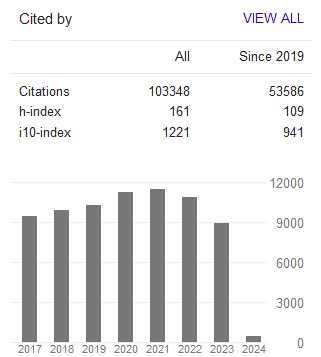The Impact of COVID-19 on the Efficiency of Packing Lines in Pharmaceutical Manufacturing Sites in Egypt
- Ashraf Elsafty
- Mohamed Osman
Abstract
Corona Virus Disease COVID-19 has significantly impacted the pharmaceutical manufacturing sector. Production Efficiency in pharmaceutical facilities is questionable to withstand the drastic conditions under which the drug manufacturing supply chains are. Overall Equipment Effectiveness (OEE) is a primary indicator of efficiency. The aim of this review is to demonstrate a comprehensive overview on the factors impacting OEE and how they are affected by COVID-19.
This review was done on a multinational pharmaceutical manufacturing facility in Egypt. In order to better understand the business model under study and have clearer vision on the impact of COVID-19 on each aspect of it, the business anatomy model ‘9 Elements’ by Elsafty (2018) was used. The time horizon of this study is 2020 to understand the impact of the COVID-19 pandemic on the pharmaceutical manufacturing performance.
The pandemic led to increase the pharmaceutical products demand which subsequently put a pressure on supply planners to alter the production scheduling. COVID-19 unraveled the weaknesses in the supply chains and the overreliance on materials suppliers of one source. This had a direct impact on the supply of materials and spare parts. Production efficiency has also been impacted by the health conditions of workers and operators might been community infected. Lack of high-skilled workers leads to decrease in the productivity due to the inability to manage and solve problems the right way and independently. Materials and finished goods quality are questionable in such situation. Introduction of counterfeit and falsified materials is a predictable side effect.
It is concluded that OEE is affected by COVID-19 that moderates the inputs of OEE; availability, performance and quality. The pandemic has an impact (positive or negative) on the top losses of a machine efficiency.
- Full Text:
 PDF
PDF
- DOI:10.5539/ijbm.v16n7p57
Journal Metrics
Google-based Impact Factor (2023): 0.86
h-index(2023): 152
i10-index(2023): 1168

Index
- Academic Journals Database
- AIDEA list (Italian Academy of Business Administration)
- ANVUR (Italian National Agency for the Evaluation of Universities and Research Institutes)
- Berkeley Library
- CNKI Scholar
- COPAC
- EBSCOhost
- Electronic Journals Library
- Elektronische Zeitschriftenbibliothek (EZB)
- EuroPub Database
- Excellence in Research for Australia (ERA)
- Genamics JournalSeek
- GETIT@YALE (Yale University Library)
- IBZ Online
- JournalTOCs
- Library and Archives Canada
- LOCKSS
- MIAR
- National Library of Australia
- Norwegian Centre for Research Data (NSD)
- PKP Open Archives Harvester
- Publons
- Qualis/CAPES
- RePEc
- ROAD
- Scilit
- SHERPA/RoMEO
- Standard Periodical Directory
- Universe Digital Library
- UoS Library
- WorldCat
- ZBW-German National Library of Economics
Contact
- Stephen LeeEditorial Assistant
- ijbm@ccsenet.org
